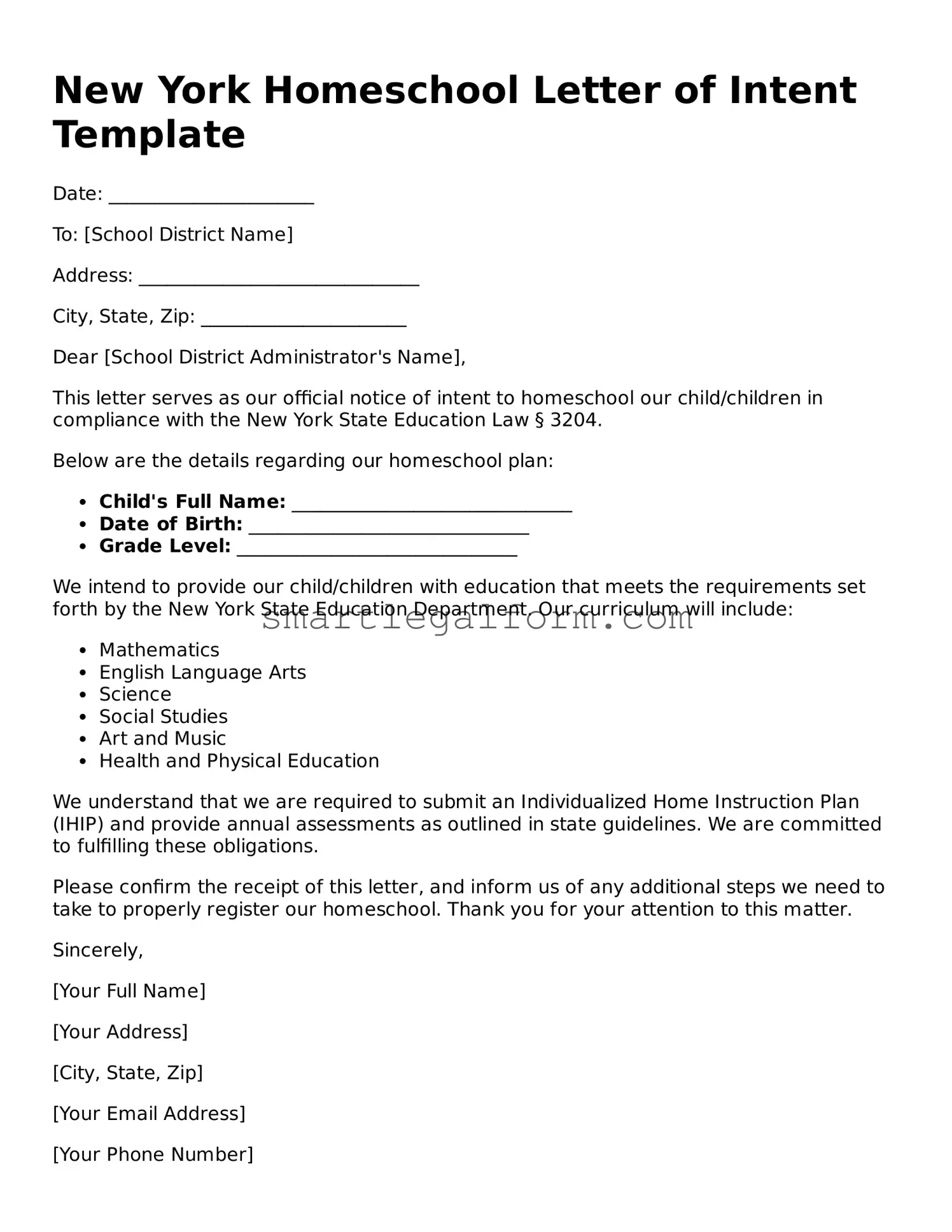New York Homeschool Letter of Intent Template
Date: ______________________
To: [School District Name]
Address: ______________________________
City, State, Zip: ______________________
Dear [School District Administrator's Name],
This letter serves as our official notice of intent to homeschool our child/children in compliance with the New York State Education Law § 3204.
Below are the details regarding our homeschool plan:
- Child's Full Name: ______________________________
- Date of Birth: ______________________________
- Grade Level: ______________________________
We intend to provide our child/children with education that meets the requirements set forth by the New York State Education Department. Our curriculum will include:
- Mathematics
- English Language Arts
- Science
- Social Studies
- Art and Music
- Health and Physical Education
We understand that we are required to submit an Individualized Home Instruction Plan (IHIP) and provide annual assessments as outlined in state guidelines. We are committed to fulfilling these obligations.
Please confirm the receipt of this letter, and inform us of any additional steps we need to take to properly register our homeschool. Thank you for your attention to this matter.
Sincerely,
[Your Full Name]
[Your Address]
[City, State, Zip]
[Your Email Address]
[Your Phone Number]
